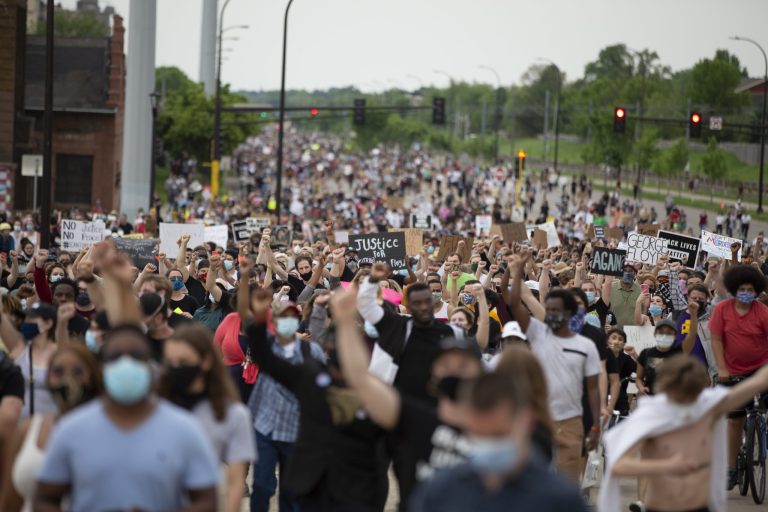Photo: Photo by Ralston Smith on Unsplash.
This article first published 5/21/21 by the Minnesota Spokesman-Recorder https://spokesman-recorder.com/2021/05/21/school-hesitancy-slows-classroom-re-openings/
Many Black parents resist a return to education as usual
Melissa Elayne was a bit relieved when the pandemic’s first wave shut down her 13-year-old daughter’s suburban Philadelphia school. The environment there was not especially conducive to learning, especially for African American children.
There was the school police officer who once gave Elayne’s daughter detention for dancing with friends in the lunchroom. There were the students and teachers who touched her hair without permission. There was even one White classmate who had taken to using the “n” word, and with a hard “r” at that.
The virtual classroom was no better. Already battling a short attention span, Elayne’s daughter was bored to tears by the robotic online instruction provided by unimaginative teachers and an inflexible curriculum that failed to engage students by connecting lesson plans to nationwide protests against police brutality or a once-in-a-lifetime public health crisis. When her daughter didn’t respond in chat sessions or turn on her camera, a few teachers logged her out of the virtual classroom and even threatened to fine Elayne for her daughter’s attendance.
“We found the virtual school environment to be hostile,” Elayne said in an interview. “There was just a lot of antipathy… None of her friends were in any of her classes, so there were no opportunities for the camaraderie which often makes school tolerable. I feel like they did a terrible job of lessening the kids’ isolation, which I’m positive was much worse for Black children.”
As a result Elayne decided to homeschool her daughter this year, and while she wouldn’t describe the transition as seamless, her daughter is excited about learning and getting the kind of quality education that the ironically named Colonial School District has long denied her.
This Philadelphia household is one of millions of Black and Latino households that have chosen not to return their children to schools that have reopened following the COVID-19 pandemic. While a federal survey indicates that only one-in-10 elementary and middle schools remain closed nationwide—and a similar number of high schools—a majority of Black, Latino and Asian American students remain out of school.
There is no single reason for this. One is that many teenagers from low-income families have found jobs to help their parents who have lost jobs or had their hours drastically cut. “I wanted to take the stress off my mom,” 18-year-old Pauline Rojas told the New York Times. She is taking courses online but working a job in fast-food and has no plans to return to her San Antonio high school.
“I’m no longer a kid,” she said. “I’m capable of having a job, holding a job, and making my own money.”
Additionally, parents who made new child care arrangements to tide them through the worst of the pandemic are reluctant to disrupt new routines that have worked relatively well for them. There are even reports that the language barrier has left some Latino parents in the dark about school re-openings.
But at base, the pandemic has led many parents of color to reevaluate the mostly White school districts that seem far more interested in controlling their children than educating them. Scholars have taken to referring to urban schools as “sites of suffering” to describe the harassment, bullying, and even physical violence visited upon schoolchildren of color by police, teachers and administrators.
Beginning with the Clinton administration’s efforts to privatize schools, successive federal educational reforms have deepened the Black community’s reservoir of mistrust that dates back to the Reconstruction era and the doctrine of “separate but equal” public resources. Black students are suspended or expelled at three times the rate of their White classmates.
While African Americans account for nearly 13 percent of the U.S. population, they represent only 6.7 percent of all teachers, underscoring the view embraced by many Blacks that their children are being taught by their enemies. In his iconic autobiography, Malcolm X wrote of the White teacher at his all-White school in Mason, Michigan who scoffed at his ambition to one day be a lawyer, telling the president of his seventh-grade class to instead consider a career in carpentry.
Experts have coined the term “school hesitancy” to describe families rejecting traditional learning models. In Washington, D.C., families in the poorest ward turned down offers for a spot in their local elementary school at twice the rate of families in the wealthiest ward, according to city data. As a result, schools in wealthier wards are back to maximum capacity while seats remain empty in the poorest neighborhoods in the city’s southeast quadrant, sparking a debate over whether resources are best spent on in-person or online learning.
Some experts worry that Black students might fall farther behind—especially in mathematics—with students on average likely to lose five to nine months of learning by the end of this school year. Students of Color could fall six to 12 months behind, compared with four to eight months for White students.
But Elayne has seized on the opportunity to homeschool. The Colonial school district has a good reputation, but Elayne notes that neither her daughter nor her older son had a Black teacher. In consultation with her daughter, she has retooled her curriculum to include the illustrated version of Karl Marx’s famous tome “Capital.” The school district requires that homeschoolers’ curriculum include some Pennsylvania state history, and “so we’re studying the Indigenous people from this area,” Elayne said.
Math continues to be her daughter’s weakest subject, but overall the educational experience so far has been a positive one. Said Elayne: “It’s been fun.”

